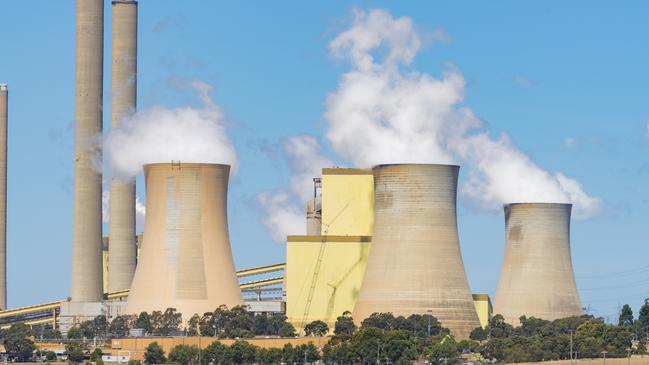Half coal plants to shut in ALP plan
Coal-fired power generation would fall by 60 per cent in the next decade to meet Labor’s 45 per cent emissions reduction target.

Coal-fired power generation would fall by 60 per cent within the next decade to meet Labor’s 45 per cent emissions-reduction target, leading to the likely closure of more than half the existing east coast plants, according to independent expert modelling.
The closures would bring an end to coal-fired generation in Victoria. But the retirement of coal assets would also be inevitable under the Coalition’s commitment to the Paris target, with up to three early closures and a reduction of almost 20 per cent in the total share of coal generation by 2030.
The final report of independent modelling research conducted by former government scientist Brian Fisher shows the energy mix in 2030 under Labor’s highest-cost scenario of a 45 per cent target, and using no carry-over from the overachievement on Kyoto targets, would mean a drop in coal’s contribution to the total energy mix from 40 per cent to 12 per cent.
This is estimated to require the closure of nine of the current 17 generators expected still to be operational in 2030, taking into account the planned closure of Liddell and Vales Point in NSW and the early retirement of Yallourn in Victoria.
Under the Coalition’s commitment to meet the Paris target of a 26-28 per cent reduction on 2005 levels by 2030, there would be three early closures and a reduction of almost 20 per cent in the total share of coal generation by 2030.
The final report of the Fisher modelling, widely regarded among economists, shows gas would have to be ramped up considerably to take up the slack.
The Australian revealed sections of the research two weeks ago, which showed Labor’s 45 per cent emissions-reduction target would push electricity prices 50 per cent higher, cost workers up to $9000 a year in lower wages and wipe $472 billion from the economy over the next decade.
The Coalition’s commitment to meeting a 26-28 per cent reduction under the Paris Agreement would also come at a cost, with $70bn in cumulative economic losses by 2030 and a 2 per cent hit to real wage growth.
Under the energy mix section, obtained by The Australian, there are six scenarios.
In the first, which assumes the government’s policy without Kyoto carry-over, coal capacity would drop from 40 per cent to 23 per cent. Gas would need to increase from 23 per cent to 38 per cent while renewables would contribute 38 per cent and 1 per cent would be sourced from elsewhere.
Under scenario four which models Labor’s policy of 45 per cent reduction by 2030 without international carbon credits or Kyoto carry-over, the coal mix drops from 40 per cent reference rate — where it would be in 2030 with no target or investment — to 12 per cent.
Gas would rise to 37 per cent and renewables would be at the Labor-mandated target of 50 per cent.
This would require the closure of nine plants, or more than half existing stock.
Under scenario two, which assumes the government position with Kyoto and international carbon credits, coal’s contribution would drop from 40 per cent to 32 per cent, with gas rising to 29 per cent and renewables at 36 per cent.
All scenarios have renewable energy having a greater contribution to the total energy mix than coal.
Analysis of the BAEconomics model conducted by the Menzies Research Centre said that under the Coalition’s target, there would be 11,649 megawatts of coal generation taken out of the system. This would almost triple under Labor’s high-cost option.



To join the conversation, please log in. Don't have an account? Register
Join the conversation, you are commenting as Logout